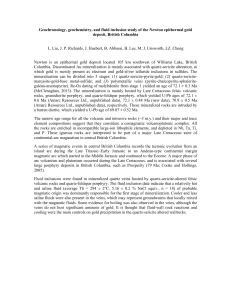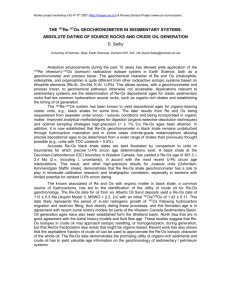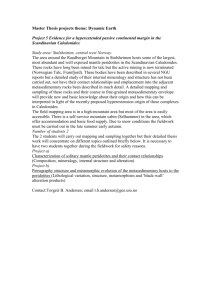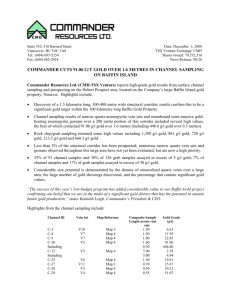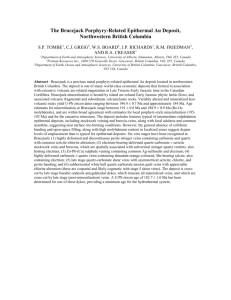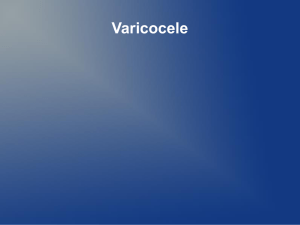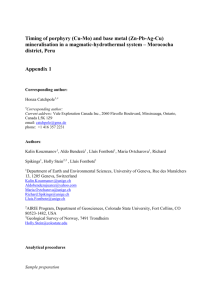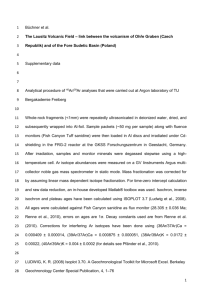Further Re-Os arsenopyrite geochronology from selected
advertisement
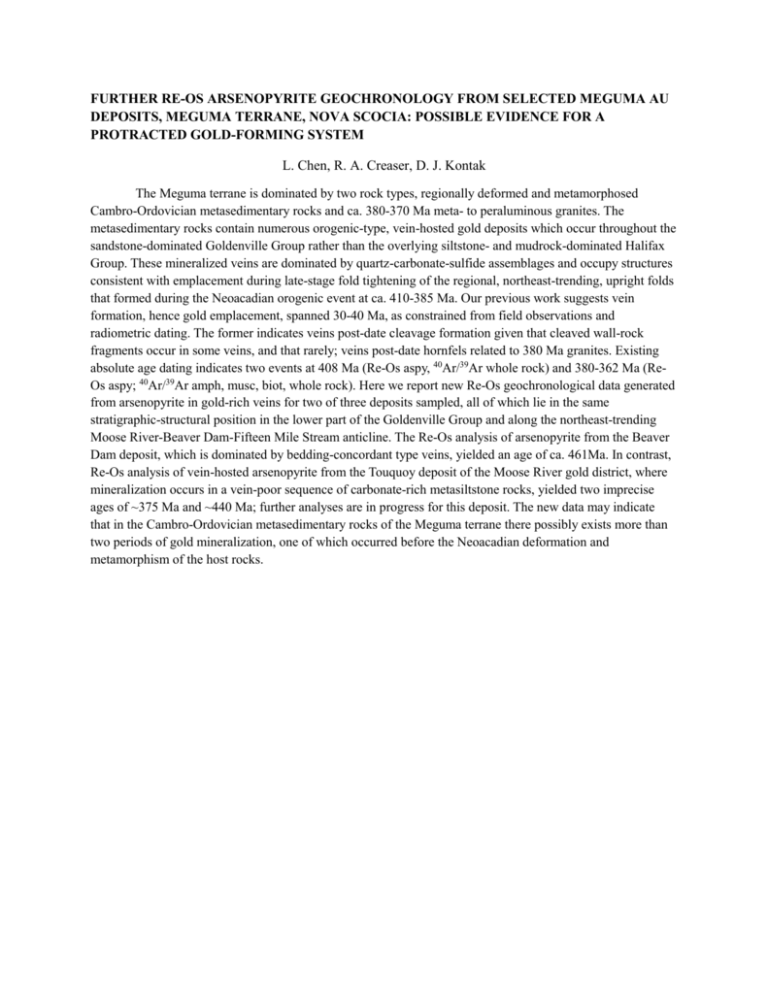
FURTHER RE-OS ARSENOPYRITE GEOCHRONOLOGY FROM SELECTED MEGUMA AU DEPOSITS, MEGUMA TERRANE, NOVA SCOCIA: POSSIBLE EVIDENCE FOR A PROTRACTED GOLD-FORMING SYSTEM L. Chen, R. A. Creaser, D. J. Kontak The Meguma terrane is dominated by two rock types, regionally deformed and metamorphosed Cambro-Ordovician metasedimentary rocks and ca. 380-370 Ma meta- to peraluminous granites. The metasedimentary rocks contain numerous orogenic-type, vein-hosted gold deposits which occur throughout the sandstone-dominated Goldenville Group rather than the overlying siltstone- and mudrock-dominated Halifax Group. These mineralized veins are dominated by quartz-carbonate-sulfide assemblages and occupy structures consistent with emplacement during late-stage fold tightening of the regional, northeast-trending, upright folds that formed during the Neoacadian orogenic event at ca. 410-385 Ma. Our previous work suggests vein formation, hence gold emplacement, spanned 30-40 Ma, as constrained from field observations and radiometric dating. The former indicates veins post-date cleavage formation given that cleaved wall-rock fragments occur in some veins, and that rarely; veins post-date hornfels related to 380 Ma granites. Existing absolute age dating indicates two events at 408 Ma (Re-Os aspy, 40Ar/39Ar whole rock) and 380-362 Ma (ReOs aspy; 40Ar/39Ar amph, musc, biot, whole rock). Here we report new Re-Os geochronological data generated from arsenopyrite in gold-rich veins for two of three deposits sampled, all of which lie in the same stratigraphic-structural position in the lower part of the Goldenville Group and along the northeast-trending Moose River-Beaver Dam-Fifteen Mile Stream anticline. The Re-Os analysis of arsenopyrite from the Beaver Dam deposit, which is dominated by bedding-concordant type veins, yielded an age of ca. 461Ma. In contrast, Re-Os analysis of vein-hosted arsenopyrite from the Touquoy deposit of the Moose River gold district, where mineralization occurs in a vein-poor sequence of carbonate-rich metasiltstone rocks, yielded two imprecise ages of ~375 Ma and ~440 Ma; further analyses are in progress for this deposit. The new data may indicate that in the Cambro-Ordovician metasedimentary rocks of the Meguma terrane there possibly exists more than two periods of gold mineralization, one of which occurred before the Neoacadian deformation and metamorphism of the host rocks.

